
SKIING HISTORY
Editor Kathleen James
Art Director Edna Baker
Contributing Editor Greg Ditrinco
ISHA Website Editor Seth Masia
Editorial Board
Seth Masia, Chairman
John Allen, Andy Bigford, John Caldwell, Jeremy Davis, Kirby Gilbert, Paul Hooge, Jeff Leich, Bob Soden, Ingrid Wicken
Founding Editors
Morten Lund, Glenn Parkinson
To preserve skiing history and to increase awareness of the sport’s heritage
ISHA Founder
Mason Beekley, 1927–2001
ISHA Board of Directors
John Fry (1930-2020), Chairman
Seth Masia, President
Wini Jones, Vice President
Jeff Blumenfeld, Vice President
John McMurtry, Vice President
Chan Morgan, Treasurer
Einar Sunde, Secretary
Richard Allen, Skip Beitzel, Michael Calderone, Christin Cooper, Art Currier, Dick Cutler, Chris Diamond, David Ingemie, Rick Moulton, Wilbur Rice, Charles Sanders, Bob Soden (Canada)
Presidential Circle
Christin Cooper, Billy Kidd, Jean-Claude Killy, Bode Miller, Doug Pfeiffer, Penny Pitou, Nancy Greene Raine
Business & Events Manager
Kathe Dillmann
P.O. Box 1064
Manchester Center VT 05255
(802) 362-1667
kathe@skiinghistory.org
Membership Services
Laurie Glover
(802) 375-1105
laurie@skiinghistory.org
Corporate Sponsorships
Peter Kirkpatrick
(541) 944-3095
peterk10950@gmail.com
Bimonthly journal and official publication of the International Skiing History Association (ISHA)
Partners: U.S. Ski and Snowboard Hall of Fame | Canadian Ski Museum and Hall of Fame
Alf Engen Ski Museum | North American Snowsports Journalists Association | Swiss Academic Ski Club
Skiing History (USPS No. 16-201, ISSN: 23293659) is published bimonthly by the International Skiing History Association, P.O. Box 1064, Manchester Center, VT 05255.
Periodicals postage paid at Manchester Center, VT and at additional mailing offices. Postmaster: Send address changes to ISHA, P.O. Box 1064, Manchester Center, VT 05255
ISHA is a 501(c)(3) public charity. EIN: 06-1347398
Written permission from the editor is required to reproduce, in any manner, the contents of Skiing History, either in full or in part.
A Decisive Moment in Time
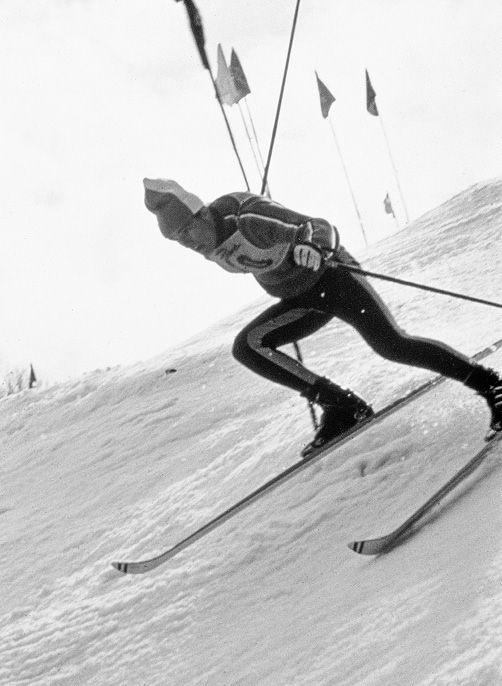 After a career covering skiing, photographer Paul Ryan has seen it all.
After a career covering skiing, photographer Paul Ryan has seen it all.
Above: Ryan looks for contrasts when shooting. The dark shadows help visually pop the red-suited racer, next to the red gate, in this image from the 1968 Grenoble Olympic Games. Also, “I liked the sense of launching into the unseen downside of the jump.” Right: Jean-Claude Killy flashes his inimitable style on course in Stowe, Vermont in 1966. The following year, Killy earned the first World Cup overall title, winning 12 of 17 races. Next up: winning the triple crown of alpine skiing, with a sweep of all three Olympic golds at that time (downhill, giant slalom and slalom) at the 1968 Grenoble Winter Games. On skis or off, Killy was as photogenic as they come, says Ryan, who worked extensively with the champ over the years.
"I always was kind of a frustrated ski racer,” admits Paul Ryan, who dabbled in competitive racing in the 1960s. Raised in Newton, Massachusetts, Ryan played hockey for Rensselaer Polytechnic Institute in upstate New York, and after graduation headed north to Stowe, Vermont, to work and follow his racing dreams. In Stowe, racer Marvin Moriarty, of the Moriarty ski hat family, gave Ryan his first camera.
As young ski racers of that generation were likely to do, “a bunch of us decided to abandon career expectations and head out West, eventually landing in Aspen,” he recalls. Ryan and buddies made the racing rounds, competing at various Western resorts, including Mammoth Mountain, where “Dave McCoy let us sleep in the unfinished lodge.”
In the early 1960s, a career beckoned, so Ryan went to graduate film school in San Francisco, but continued to race. He found himself at Sugar Bowl Resort in California for the final race of the season, where he received the career advice of a lifetime. “You are not getting anywhere racing,” Ed Siegel, Sugar Bowl’s general manager told him. “But you’re a pretty good photographer. Come work for us.”
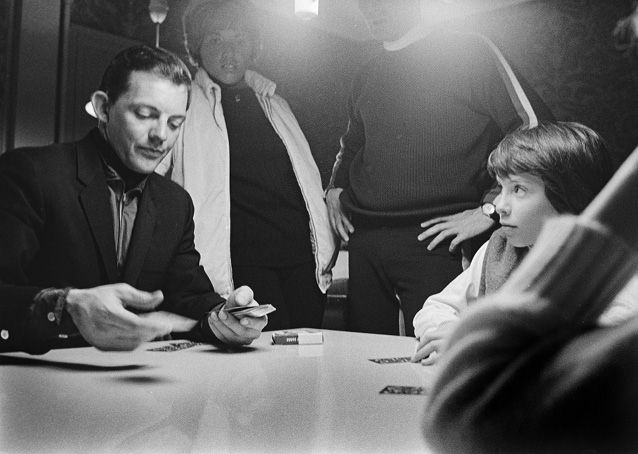
He did. “It was my first job getting paid to take pictures,” Ryan says with a laugh. Skiing remained a passion, but he found the time to pursue his craft in San Francisco, and made a name for himself chronicling the 1960s counterculture there. But he had found a home in skiing, and John Fry hired him as the staff photographer at SKI magazine for several years. He traveled the world shooting for SKI and other periodicals.
Ryan’s personal lens was always wider than just the sport of skiing. He studied under the greats of the time, including Minor White and Ansel Adams. His photography has been honored in international shows, with recent exhibits including “The Sea Ranch, Architecture, Environment, and Idealism” at the San Francisco Museum of Modern Art.
Ryan has always moved fluidly between still photography and cinematography. His cinema credits include Robert Redford’s A River Runs Through It and The Horse Whisperer. His documentary work includes Gimme Shelter, Salvador Dali, and recently a film on George Soros.
Ryan has always found his way back to the mountains. This photo essay illuminates an era in skiing’s history and also the progress of photography, which has changed as much as the sport that Ryan covers.
“Photography has evolved enormously since the years when I was very involved in photographing the ski world,” Ryan, now 83, says from his home in Santa Monica, California. “Cameras and iPhones have become very mobile and everyone can take photos of anything.”
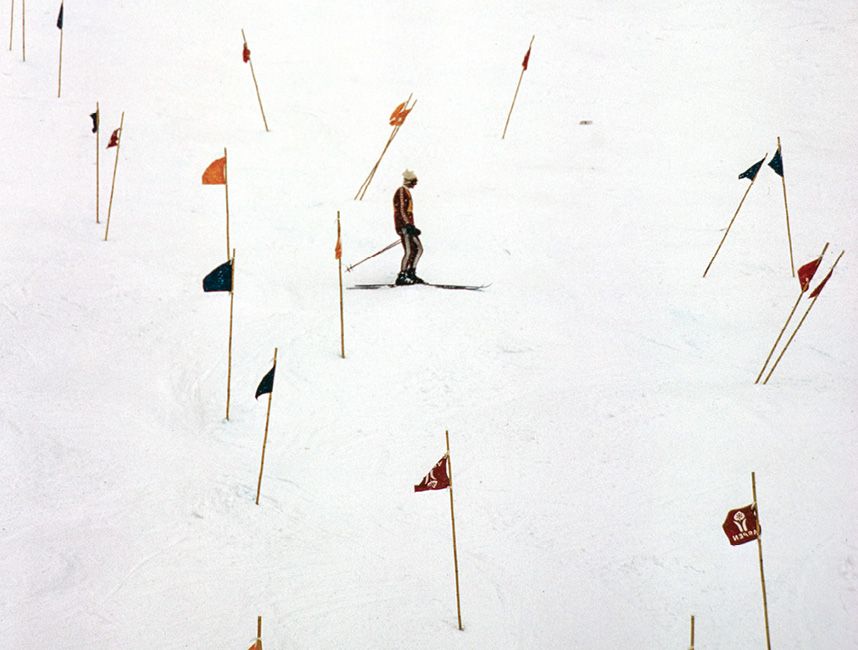
With the new mobile technology, “images are abundant and personal moments are revealed every day,” he notes. Ever the artist, Ryan sees these advancements not as a threat to his craft, but as new tools to use. “Photoshop makes possible the transformation of photographs into our own impressionistic images, and expressions of our thoughts superimposed onto the events in front of the lens,” he says. “It’s a visually exciting time.”
These images here are from a different time, “when on the side of the mountain, I had to pre-visualize the end result, often not seeing the processed film until days later,” Ryan says.
Though the technology has changed, what constitutes a powerful image has not. Ryan says there are two main components to a successful photo: What he calls “the graphics” or the visual structure of the image, and “the human element,” or the emotions that are shown in the photograph.
Great photography combines both to reveal “Cartier-Bresson’s ‘decisive moment’ in time,” Ryan says. The art is in recognizing that instant. “A compelling photograph is not what happened a second before or a second after. It’s a single moment,” Ryan says. “A photographer’s goal is to capture that decisive moment.” 
This is Part 1 of a 2 part photo essay series from Paul Ryan, with the second installment in the November/December issue. View this photo essay as a mini-master class in photography, as Ryan explains his approach to his craft and the intriguing backstories to each image.
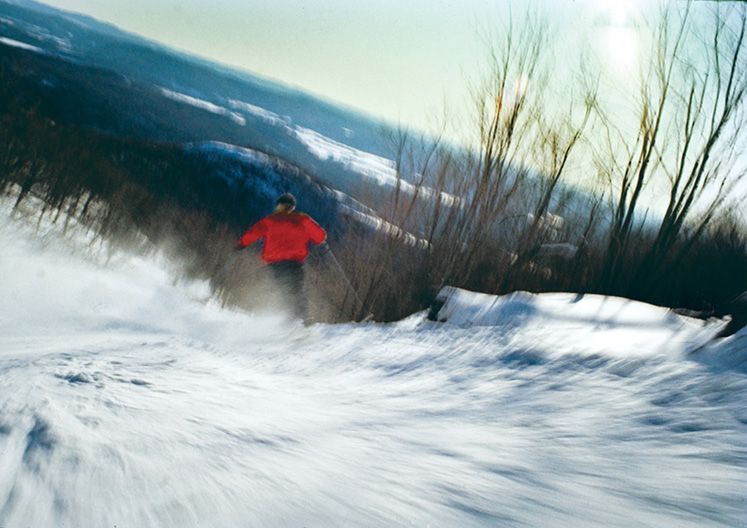



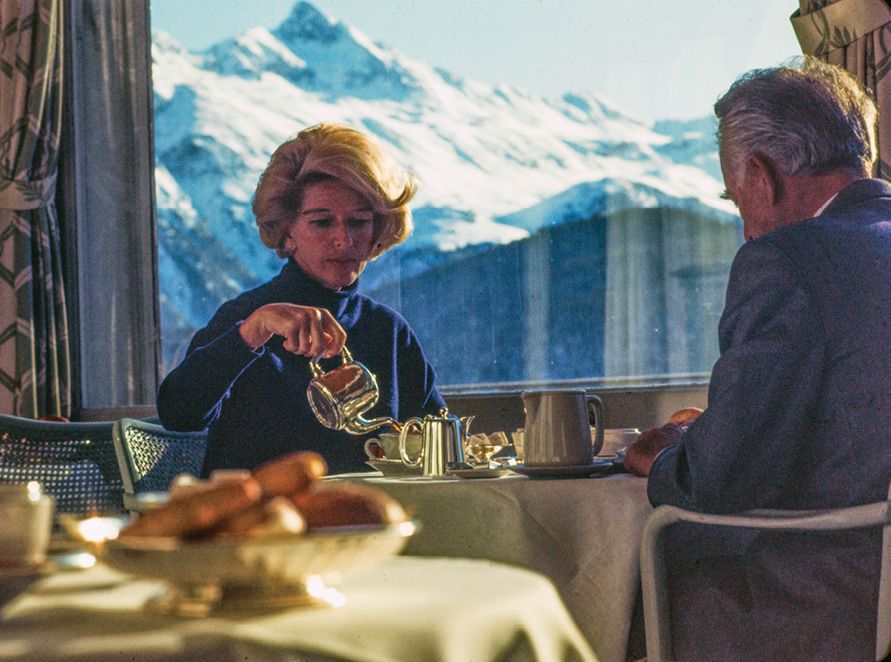


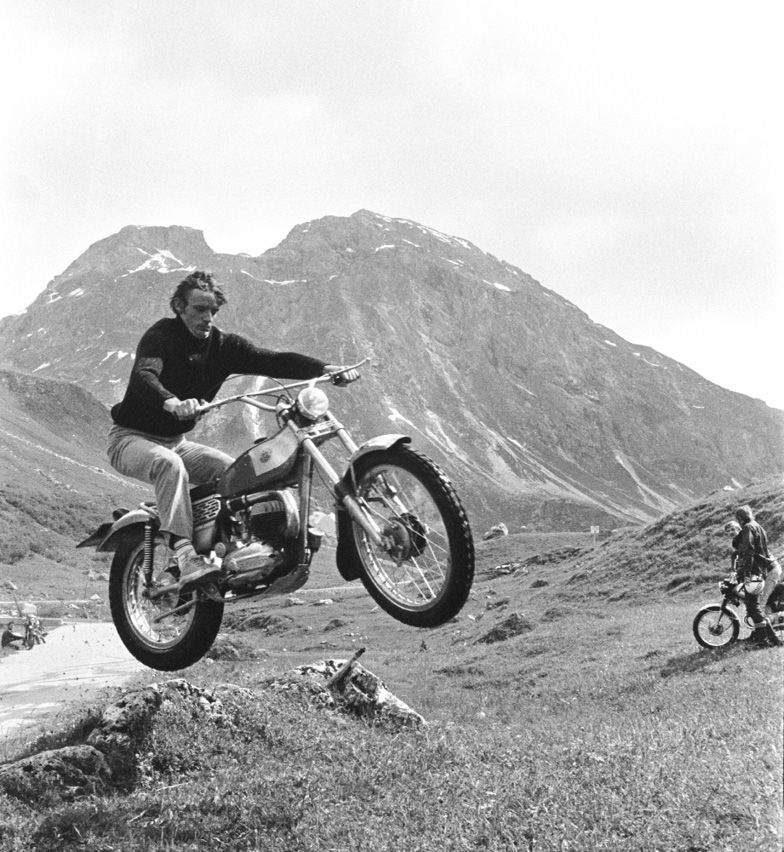
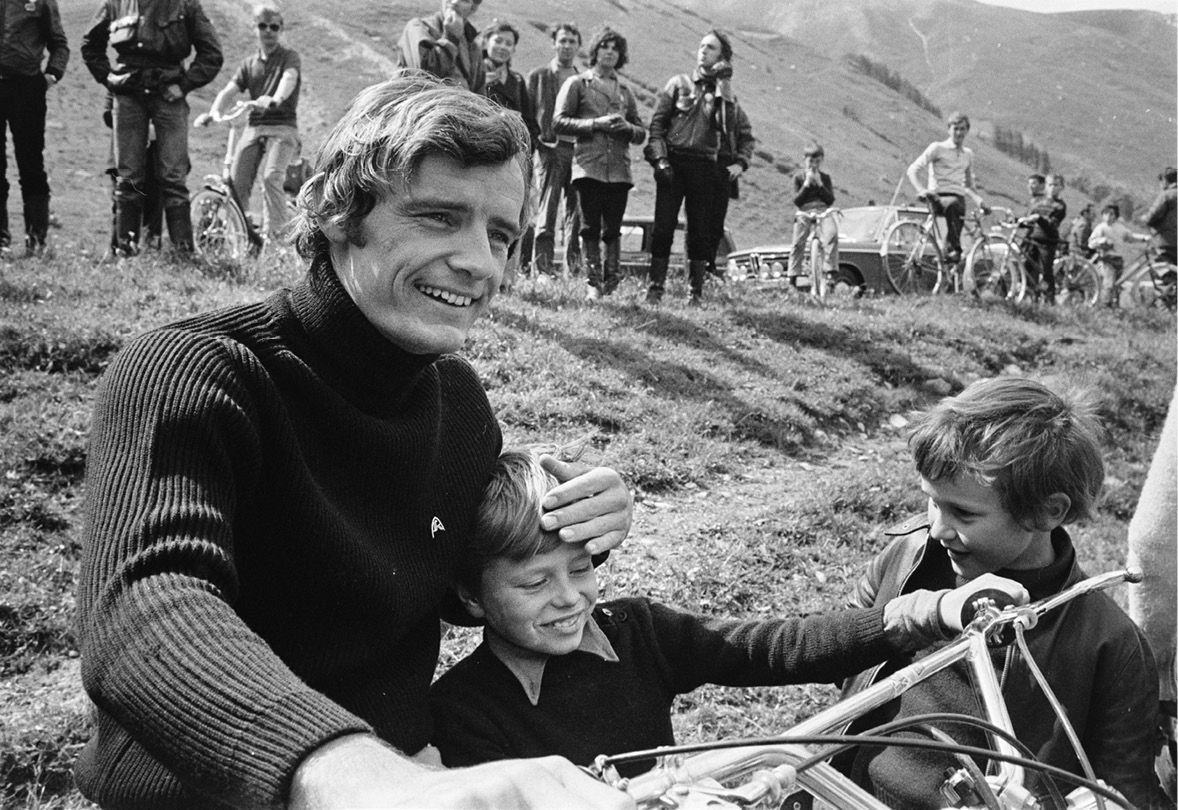



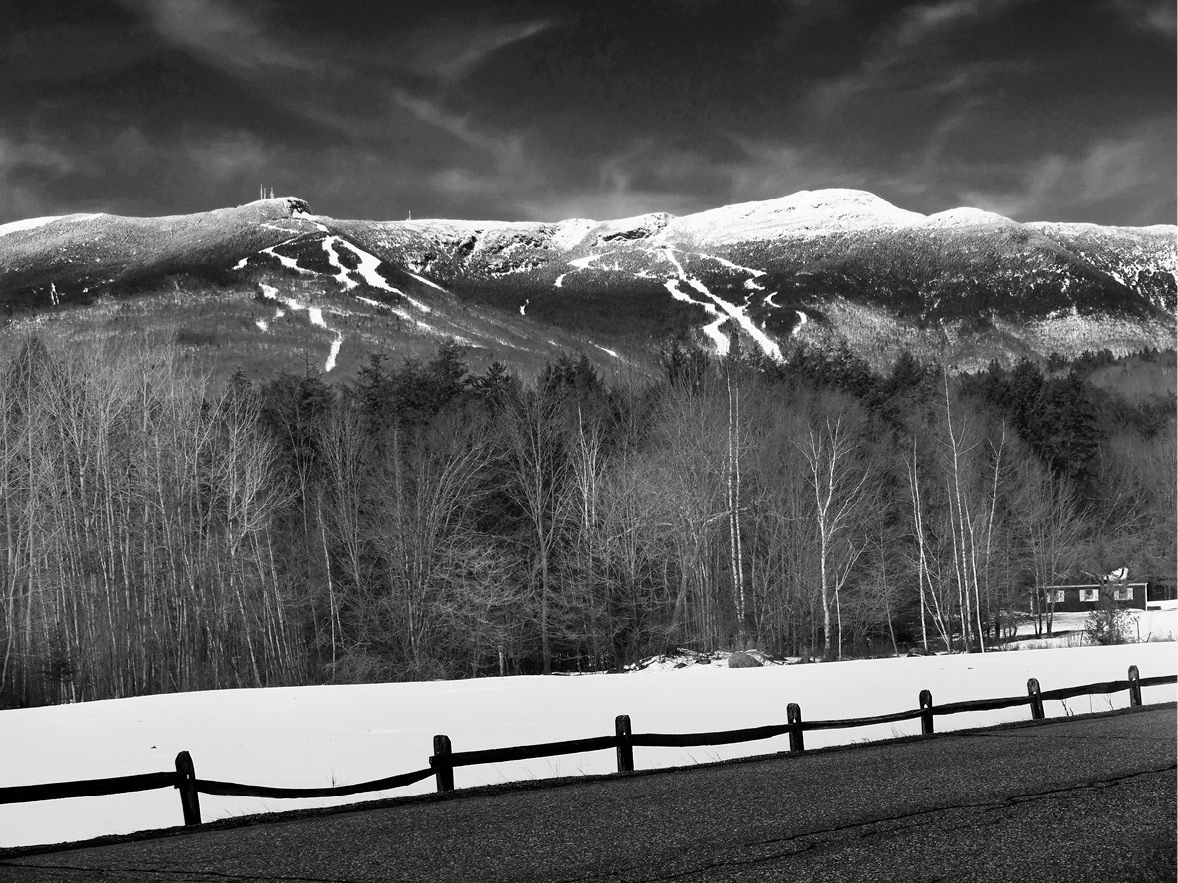

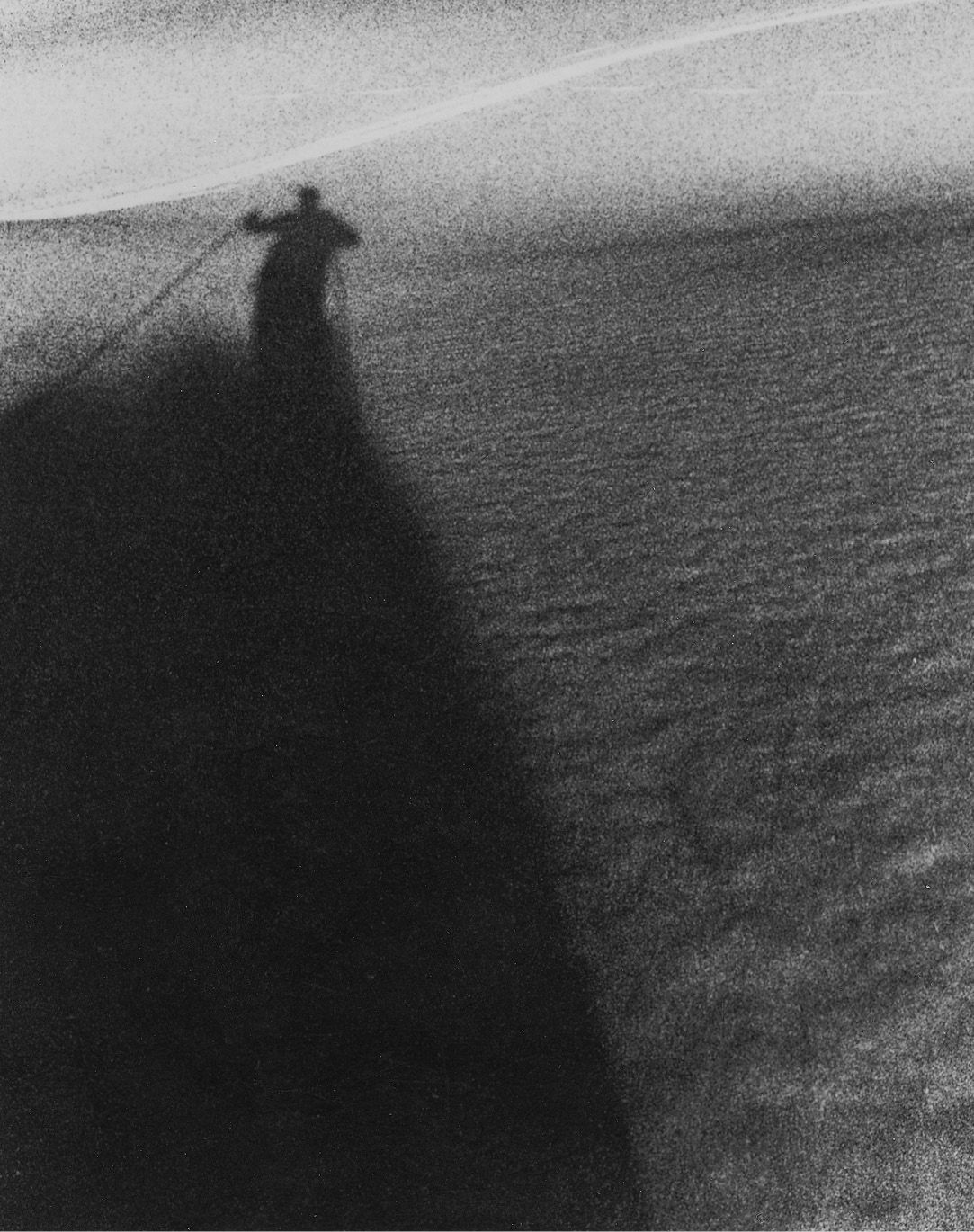
Table of Contents

Corporate Sponsors
ISHA deeply appreciates your generous support!
World Championship
($3,000 and up)
Gorsuch
Polartec
Warren and Laurie Miller
World Cup ($1,000)
Aspen Skiing Company
BEWI Productions
Bogner
Boyne Resorts
Dale of Norway
Darn Tough Vermont
Descente North America
Dynastar | Lange | Look
Fairbank Group: Bromley, Cranmore, Jiminy Peak
Gordini USA Inc. | Kombi LTD
HEAD Wintersports
Hickory & Tweed Ski Shop
Intuition Sports, Inc.
Mammoth Mountain
Marker-Volkl USA
National Ski Areas Association (NSAA)
Outdoor Retailer
Rossignol
Ski Area Management
Ski Country Sports
Snowsports Merchandising Corporation
Sport Obermeyer
Sports Specialists, Ltd.
Sun Valley Resort
Vintage Ski World
World Cup Supply, Inc.
Gold ($700)
Race Place | BEAST Tuning Tools
The Ski Company (Rochester, NY)
Silver ($500)
Alta Ski Area
Boden Architecture PLLC
Dalbello Sports
Ecosign Mountain Resort Planners
Fera International
Holiday Valley
Hotronic USA, Inc. | Wintersteiger
MasterFit Enterprises
McWhorter Driscoll, LLC
Metropolitan New York Ski Council
Mt. Bachelor
New Jersey Ski & Snowboard Council
NILS, Inc.
Portland Woolen Mills
Russell Mace Vacation Homes
Schoeller Textile USA
Scott Sports
Seirus Innovations
SeniorsSkiing.com
Ski Utah
Tecnica Group USA
Timberline Lodge & Ski Area
Trapp Family Lodge
Western Winter Sports Reps Association
World Pro Ski Tour
The International Skiing History Association (ISHA) is grateful to the generous corporate sponsors who share our commitment to preserving skiing history and sharing it with the world. During this difficult time, your financial support is vital to our success, and we urge our members to support you in return. —ISHA Board of Directors


